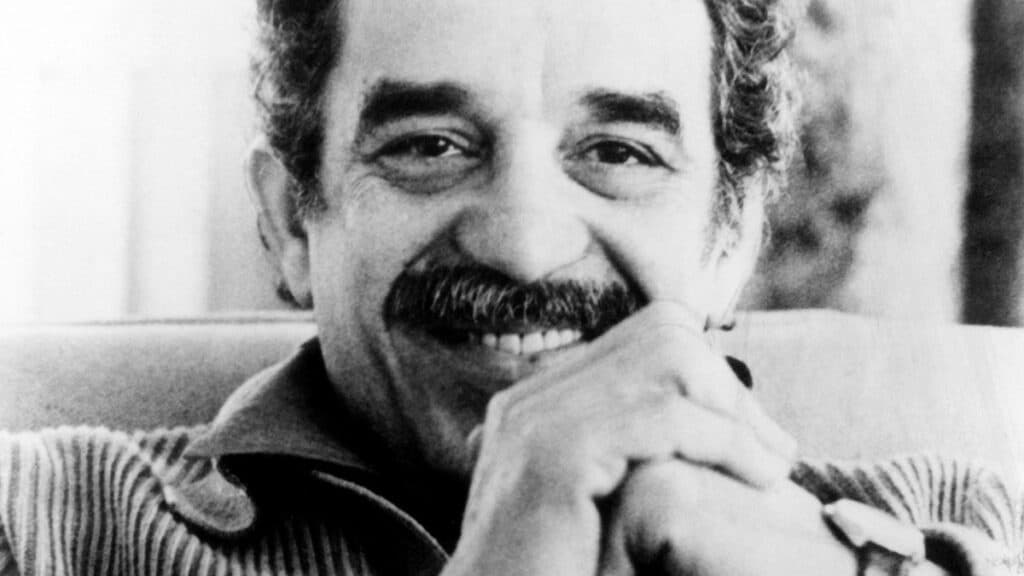Gabriel García Márquez is the most famous Colombian writer. He is the author of many iconic Latin American novels including “One Hundred Years of Solitude” (1967), “The Autumn of the Patriarch” (1975), and “Love in the Time of Cholera” (1985).
ARACATACA, Magdalena, Colombia

Born in Aracataca, Magdalena, Colombia on March 6, 1927, Márquez rose to prominence during the Latin American Boom of the 1960s and 1970s when writers including Julio Cortázar of Argentina, Carlos Fuentes of Mexico and Mario Vargas Llosa of Peru got published in Europe and became famous around the world.
‘One Hundred Years of Solitude’ (1967)
“Gabo’s” most famous book is based on memories of growing up in his grandparent’s house in a small Colombian town.
The novel tells the story of several generations of the Buendía family in the fictional village of Macondo. Though it is fiction, the book is generally interpreted as a literary history of Colombia and Latin America.
It’s a bit of a hard read because different generations of characters have similar names and Márquez seems to shift back and forth in time throughout the novel. It’s an expression of the author’s belief that history repeats itself.
He juxtaposes the selfishness of the political landowning class with the love shared among the common people. Community as an expression of universal love is offered as a way forward for the Buendía family and therefore humanity.
Colombia has a very traditional society that completely embraced the socio-political models imposed by the Spanish colonizers. The Spanish Encomienda system of owning land and the labor of the people on it, was only broken down in the 1970s. It was the all-corrupting influence of the narcos that did it. The problem is that while it is easy to destroy social structures, it is hard to build things in their place.
Interestingly, our own country is increasingly trapped in the same struggle between the rich property-owning investor class and everyone else. Like Colombia of the 1980s, we now have our own family of con artists that is attacking the structures on which our society is founded. Maybe we should all read “Cien años de soledad.”
‘Love in the Time of Cholera’ (1985)
This is one of the greatest love stories ever. Márquez based it on the courtship of his own parents. His mother’s parents disapproved and tried to keep their daughter away from her love, but his father persisted until they gave up and allowed the marriage. If you ever dated a Colombian, you may well have found yourself in the same situation with her parents.
The theme of the novel is that true love is eternal and can find its way through any obstacle. We wonder if that is true.
You should be so lucky as to be truly in love once in your life, and you should be so unlucky as to be truly in love once in your life. Love makes you do the craziest things.
In the story, Florentino Ariza and Fermina Daza fall in love when they are young, but Fermina marries a doctor instead. Decades later when the man passes away in their old age, Florentino returns, overcomes her reluctance and the couple completes their destiny.
Enjoying a long journey with his love on a riverboat, Florentino keeps the trip from ending by having the captain raise the yellow flag which is a warning of cholera on board. When he asks how long they can carry on like this, the answer is, “forever.”
Magical Realism
Márquez is considered the father of Magical Realism, a style of writing that blends reality and the supernatural without irony.
Colombia is one of those places in the world where some crazy shit happens. I say that from personal experience. Things happen that you can’t explain in a rational way. You can only experience them and live in awe of the infinite possibilities of life.
Magical Realism is considered a literary construct, but for many of us is an accurate description of the real magic in our daily lives. “It is life, more than death, that has no limits.” (‘Love in the Time of Cholera,’ 1985)
“It is life, more than death, that has no limits”
Gabriel García Márquez
The complement to Magical Realism in art is Surrealism which runs deep in Mexico. Maybe that explains why Colombians and Mexicans like each other’s culture. Colombian cumbia is popular in Mexico and Mexican mariachi is popular in Colombia.
Márquez was awarded the Nobel Prize for Literature in 1982.
Happy Birthday Gabo! We wonder if love in the time of social media is the same as love in the time of cholera. Only time will tell.
